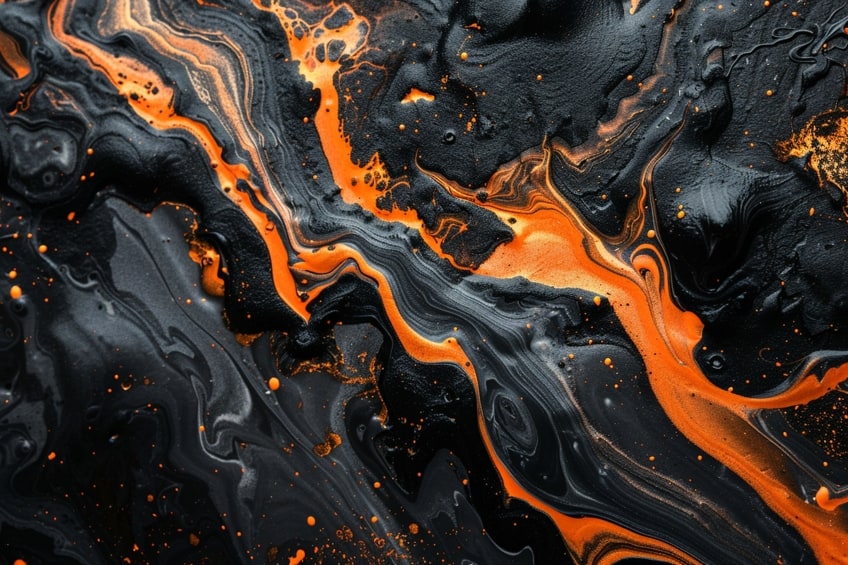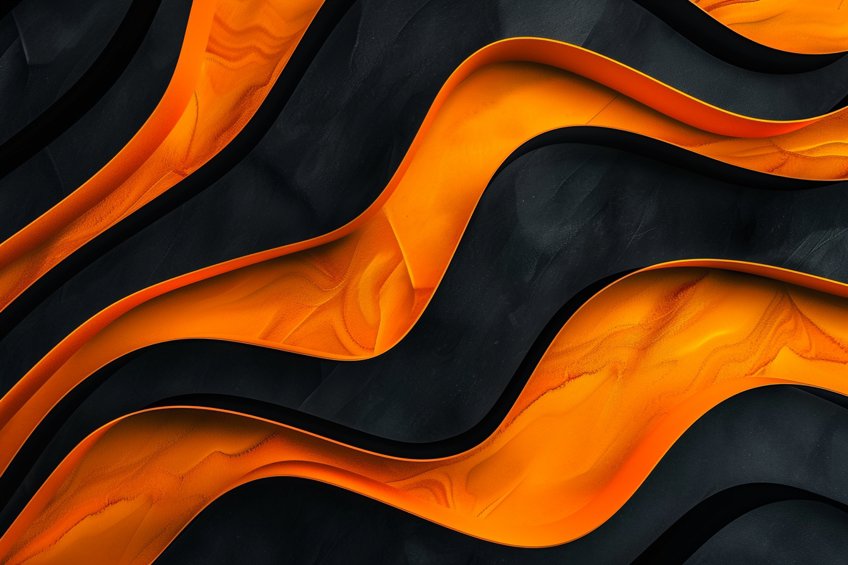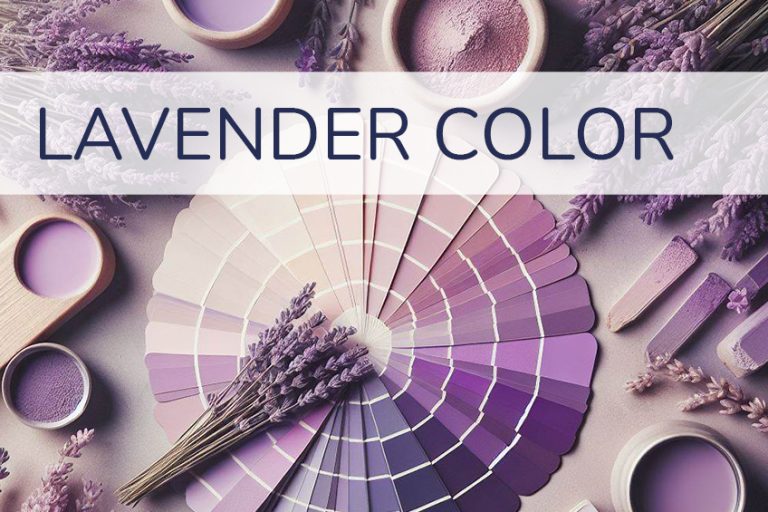Orange and Black Make What Color? – Halloween Hues
Welcome to the vibrant world of color mixing! Have you ever wondered what happens when the warm, fiery hues of orange collide with the dark, mysterious depths of black? Prepare to embark on a chromatic adventure as we uncover the magical fusion of these two contrasting tones. From blazing sunsets to spooky Halloween nights, the combination of orange and black ignites a palette of possibilities. So, grab your paintbrushes and let’s explore: What color does orange and black make? Get ready to be dazzled by the captivating chemistry of color!
Key Takeaways
- Mixing orange and black paint typically results in a brown color.
- The shade of brown can vary based on the ratio and tone of the original orange and black used.
- Knowledge of how different colors blend is essential in art and design for achieving the desired outcomes in coloration.
The Science of Color Mixing
Color mixing is a fundamental aspect of understanding how different colors interact. It serves as the basis for creating a variety of hues, shades, and tones in both digital media and visual arts.

Understanding Color Theory
Color theory explains how colors are created and the impact they have. It grounds in the concept of primary colors (red, yellow, and blue) which cannot be made from combining other colors. Secondary colors are created by mixing the primary colors: orange from red and yellow, green from yellow and blue, and purple from blue and red. Further blending of these colors yields tertiary colors.
The color wheel is a useful tool for visualizing these relationships:
- Primary colors: Red, yellow, and blue
- Secondary colors: Orange, green, and purple
- Tertiary colors: Yellow-orange, red-orange, red-purple, blue-purple, blue-green, and yellow-green
The Role of Light and Pigments
The perception of color is dependent on the interaction between light and pigments. Light consists of various wavelengths that correspond to different colors. The RGB color model, based on light, uses red, green, and blue as the primary colors and is additive; combining all produce white light. Conversely, the CMYK color model uses the subtractive color model principles, crucial in printing and painting, where cyan, magenta, yellow, and black (key) inks are used.

When mixing pigments, the resulting color will have a lower value, often appearing as a darker shade. Orange mixed with black, for instance, results in a darker hue, specifically a dark brown, due to the reduction of reflected wavelengths.
Mixing Orange and Black
When orange and black are combined in the world of color theory, the outcome is typically a shade of brown. The science of color mixing tells us that brown results from the blending of these two specific hues because orange is a secondary color made from the primaries red and yellow, and black is considered a shade that possesses all colors.
As black is introduced to orange, the resulting mixture progressively darkens, ultimately producing a variation of brown.

The exact shade of brown created by mixing orange and black can vary depending on the proportions used. The intensity and tone of orange, along with the quantity of black added, determine the precise brown hue that emerges. In artistic and design contexts, understanding this color mixture is useful as it expands the palette of possible shades for creators to express their visions effectively.
Understanding Orange
| Shade | Hex Code | CMYK Color Code (%) | RGB Color Code | Color |
| Orange | #FFA500 | 0, 50, 100, 0 | 255, 165, 0 |
Orange is a secondary color created by combining red and yellow. It is a vibrant color often associated with energy and creativity. When adjusting brightness or adding depth to an orange, one might blend it with white to create a lighter tint or with gray to retain its vibrancy while toning down the intensity. Orange stimulates emotions, encourages socialization, and represents change and ambition. From glowing sunsets to ripe citrus fruits, orange captivates the senses and sparks the imagination, inspiring us to embrace life’s energy with courage and joy.

Understanding Black
| Shade | Hex Code | CMYK Color Code (%) | RGB Color Code | Color |
| Black | #000000 | 0, 0, 0, 100 | 0, 0, 0 |
Black is a neutral color that absorbs all light, making it the darkest color. In color theory, it is considered a shade rather than a hue and can darken other colors when mixed with them. Black is potent and, even in small amounts, can significantly affect a color combination within a palette.
Black symbolizes sophistication, mystery, and authority.
It evokes elegance and power while also representing the unknown and resilience. From sleek fashion statements to profound artworks, black captivates with its depth and invites introspection and contemplation.
The Color Brown
| Shade | Hex Code | CMYK Color Code (%) | RGB Color Code | Color |
| Brown | #A52A2A | 0, 60, 60, 65 | 165, 42, 42 |
The resultant color when mixing orange and black is brown or more specifically, a variant resembling burnt umber. Brown is a darker, less intense color than orange, often used to convey a sense of stability and structure. It is an earthy neutral color that complements a variety of colors and is popular in color schemes with a natural or organic theme. Brown, an earthy hue, symbolizes stability, reliability, and connection to nature. It reflects the richness of soil and tree bark, evoking feelings of security and reassurance. Brown speaks to simplicity, practicality, and authenticity, reminding us of the enduring beauty of the natural world.

Meanings and Associations of Brown
Brown is a versatile color that often represents stability and reliability. Its use in various contexts can influence perception and behavior.
Interior Design
In interior design, brown is a common palette choice for its warmth and grounding effect. It pairs well with a variety of colors, creating a cozy and inviting atmosphere. For instance, a rich chocolate brown can serve as a bold backdrop for brighter accents, or a light tan can offer a subtle, neutral canvas for décor.
Fashion
In fashion, brown is a timeless color that conveys a sense of sophistication and earthiness. It is often associated with durable materials like leather and suede. Designers may use brown to evoke an image of ruggedness or classic elegance, depending on the hue and context.

Emotional Impact
The emotional impact of brown is typically positive, as it can evoke feelings of warmth, comfort, and security. However, it can also be perceived as dull if overused or when not paired with complementary colors to enliven the space.
Cultural Significance
Brown carries various cultural significances across the globe. In Western cultures, brown is often symbolic of the earth and autumn, representing things that are organic and natural. Conversely, in some Eastern cultures, brown may be seen as the color of mourning. Cultural perceptions of brown are significant in the context of color psychology and should be thoughtfully considered in design and art.

In the kaleidoscope of color exploration, we’ve journeyed through the delightful interplay of orange and black, unraveling the mysteries of their dynamic union. From the warmth of autumnal landscapes to the thrill of midnight celebrations, the fusion of orange and black paints a canvas of endless fascination. As we conclude our exploration, remember that the magic of color lies not only in the hues themselves but in the stories they tell and the emotions they evoke. So, whether it’s the glow of a jack-o’-lantern or the elegance of a monarch butterfly, let the enchanting harmony of orange and black continue to inspire your artistic endeavors. Embrace the spectrum, and let your creativity shine bright!
Frequently Asked Questions
How Does Black Modify the Shade of Orange When Mixed?
When black is mixed with orange, it darkens the hue, creating a shade of brown. The amount of black added determines the darkness of the resulting brown; a small amount will make a darker orange, while a larger quantity will produce a deeper brown.
Can Orange and Black Be Used Effectively in Fashion Combinations?
Yes, orange and black can be used effectively in fashion. They create a striking contrast that is often associated with boldness and creativity. This combination is particularly popular during autumn and for Halloween-themed attire.
What Emotions or Symbolism Can Black and Orange Represent When Used Together?
Black and orange, when used together, often represent a mix of warmth and mystery. Orange is typically associated with excitement, warmth, and energy, while black is often linked to sophistication, elegance, and sometimes mystery. Their combination can symbolize a balance between vibrancy and seriousness.
In 2005, Charlene completed her Wellness Diplomas in Therapeutic Aromatherapy and Reflexology from the International School of Reflexology and Meridian Therapy. She worked for a company offering corporate wellness programs for a couple of years, before opening up her own therapy practice. It was in 2015 that a friend, who was a digital marketer, asked her to join her company as a content creator, and this is where she found her excitement for writing.
Since joining the content writing world, she has gained a lot of experience over the years writing on a diverse selection of topics, from beauty, health, wellness, travel, and more. Due to various circumstances, she had to close her therapy practice and is now a full-time freelance writer. Being a creative person, she could not pass up the opportunity to contribute to the Art in Context team, where is was in her element, writing about a variety of art and craft topics. Contributing articles for over three years now, her knowledge in this area has grown, and she has gotten to explore her creativity and improve her research and writing skills.
Charlene Lewis has been working for artincontext.org since the relaunch in 2020. She is an experienced writer and mainly focuses on the topics of color theory, painting and drawing.
Learn more about Charlene Lewis and the Art in Context Team.
Cite this Article
Charlene, Lewis, “Orange and Black Make What Color? – Halloween Hues.” Art in Context. March 4, 2024. URL: https://artincontext.org/orange-and-black-make-what-color/
Lewis, C. (2024, 4 March). Orange and Black Make What Color? – Halloween Hues. Art in Context. https://artincontext.org/orange-and-black-make-what-color/
Lewis, Charlene. “Orange and Black Make What Color? – Halloween Hues.” Art in Context, March 4, 2024. https://artincontext.org/orange-and-black-make-what-color/.









